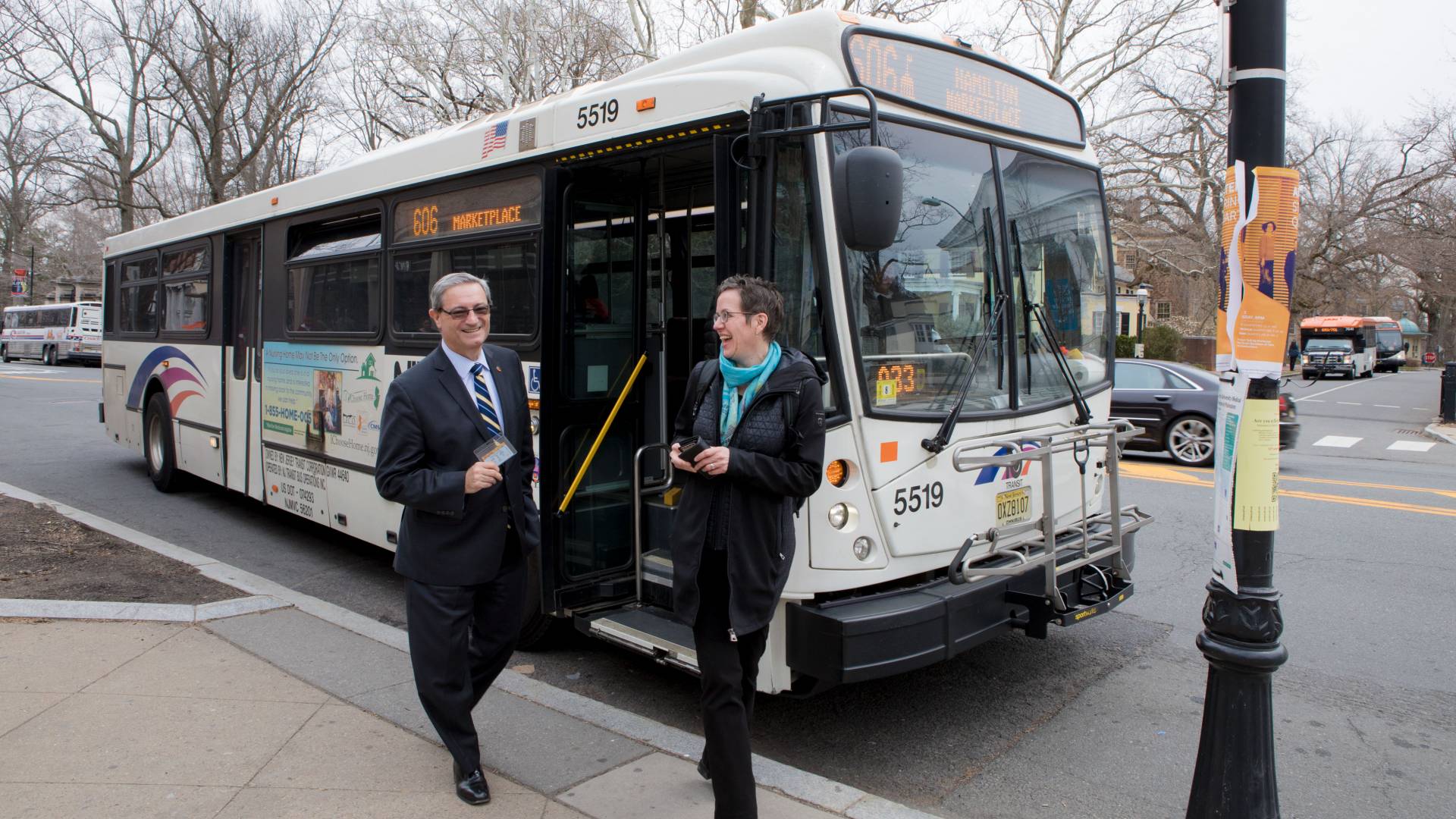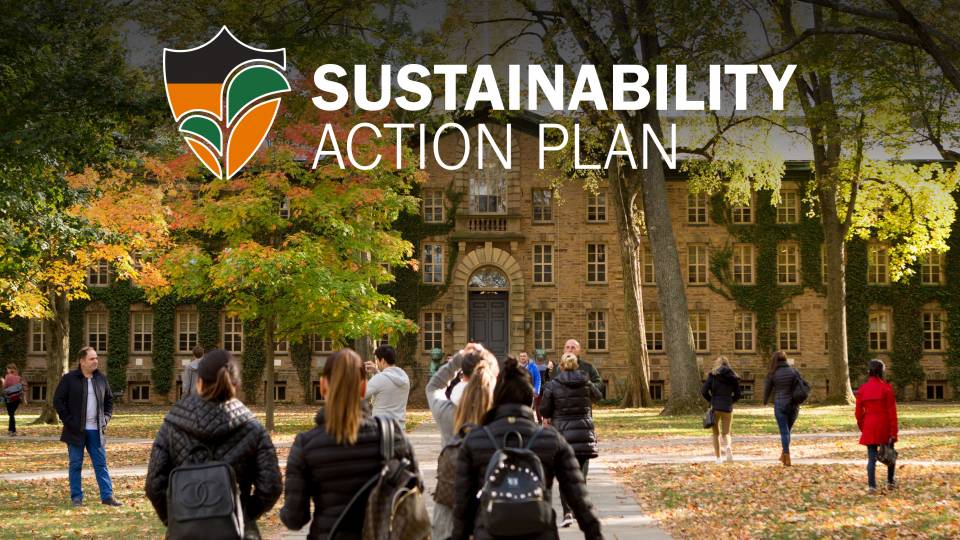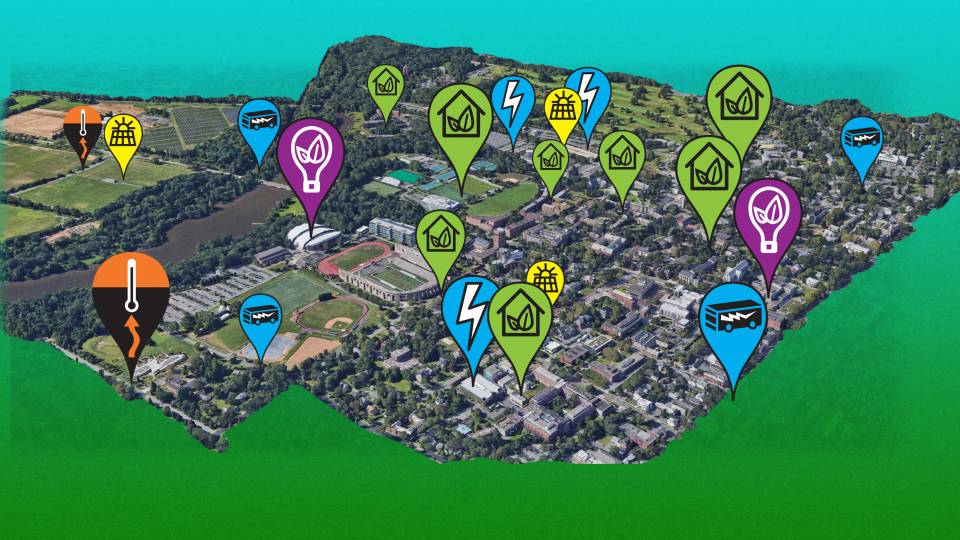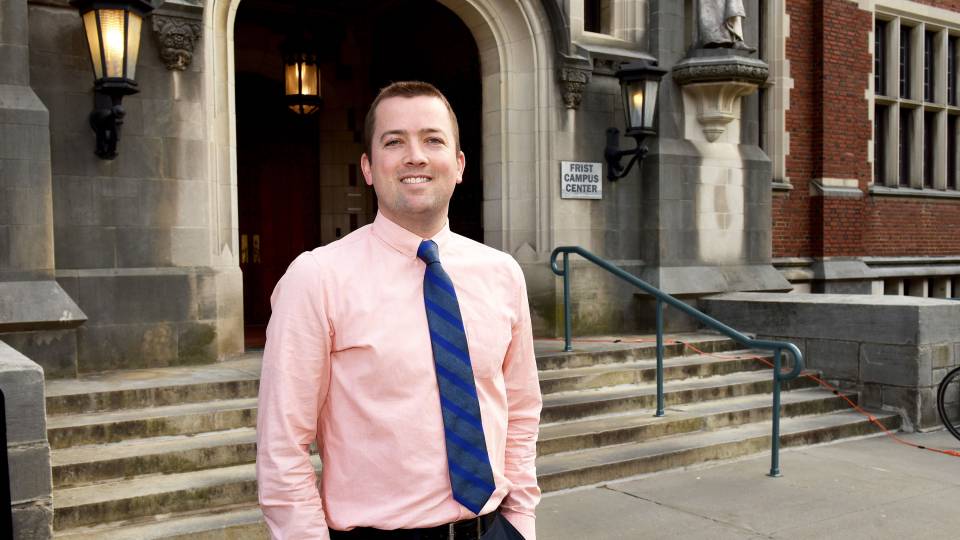Daniel Day, assistant vice president for communications, and Andrea Graham, associate professor of ecology and evolutionary biology, share a laugh as their bus arrives at Palmer Square. Day and Graham are among the many employees and faculty participating in the University's Revise Your Ride program.
After five years of long drives from Flemington to Princeton, Karen Babecki thought there must be a better way to commute to work. She joined the University’s Revise Your Ride program in January and has been carpooling to campus ever since.
Babecki, an office assistant in Housing and Real Estate Services, drives with Lisa Nicolaison, program coordinator in the Office of Sustainability. Each receives a $400 annual cash incentive, and they share a tag to park in spots reserved for University carpools and vanpools.
“I’m driving an awful lot less. I’m saving gas money. I’m reducing the wear and tear on my car. I’m enjoying having the company,” Babecki said.
“And we are helping the environment by reducing the carbon emissions that cars give out,” Nicolaison added.
Revise Your Ride (RYR) launched last fall to reduce single-occupancy vehicles driving to Princeton and parking on campus. Faculty and staff receive incentives if they participate in one of five commuting programs:
- Walk or bike: $400 annual cash incentive
- Carpool: $400 annual cash incentive
- Vanpool: $200 annual cash incentive and use of an Enterprise van
- Mass transit (also available to graduate students): 50 percent subsidy of monthly rail passes
- NJ Transit bus (also available to graduate students): Free pass for NJ Transit buses
“Beyond the cost savings, I like the low-stress nature of the commute and the ability to get things done on the train,” said Jim Sturdivant, communications specialist in Environmental Health and Safety, who travels from Haverford, Pennsylvania.
The University previously offered incentives for carpool, vanpool and mass transit. Revise Your Ride enhanced those benefits; added the walk/bike option; offered free NJ Transit bus passes; and increased resources to encourage participation, such as the Commute Concierge Service that develops personalized commuting plans for employees.
This spring, RYR will add loyalty and employee referral programs, as well as commuter alerts on the Transportation and Parking Services’ Twitter feed. The University also will hold regional commuter events, such as Bike to Work month in May.
“Before there was a partial reimbursement for the bus pass; now there is full reimbursement,” said Campus Dining employee Edith Murray, who lives in Hamilton. “It helps tremendously and is easy because the bus drops me right in front of campus at Palmer Square.”
More than 1,000 employees now participate in an alternative commuting program, including 600 new members who signed up since October. According to Transportation and Parking Services, RYR participants over the last six months have:
- saved almost 10,000 gallons of gas;
- reduced 200,000 pounds of carbon emissions;
- avoided driving enough to cross the country 110 times; and
- avoided $30,000 in gas and maintenance costs.
Supporting strategic and sustainability goals
Director of Transportation and Parking Services Kim Jackson said RYR is more than a parking program.
“This is a University-wide initiative,” Jackson said. “By reducing vehicles, we free space to grow campus in support of the University’s strategic teaching and research priorities.
“There also is an important sustainability component,” Jackson continued. “Decreasing the number of cars that drive to campus is part the University’s ongoing efforts to cut carbon dioxide emissions, reduce local air pollution and improve traffic.”
So far, more than 300 single-occupancy vehicles have been removed from campus. The University’s goal is a total reduction of 1,200 single-occupancy vehicles by fall 2020, when a fee-based parking program for faculty and staff will be introduced.
“I think the program shows the University not only believes in reducing vehicles and helping the environment, but also is willing to invest in a better future for the entire campus community,” said Debby Foster, who walks to work. “There is no question that driving your own car will always be more convenient. But it doesn’t make it better. You can be proud that you are doing something to further the mission of our University and to help the environment.”
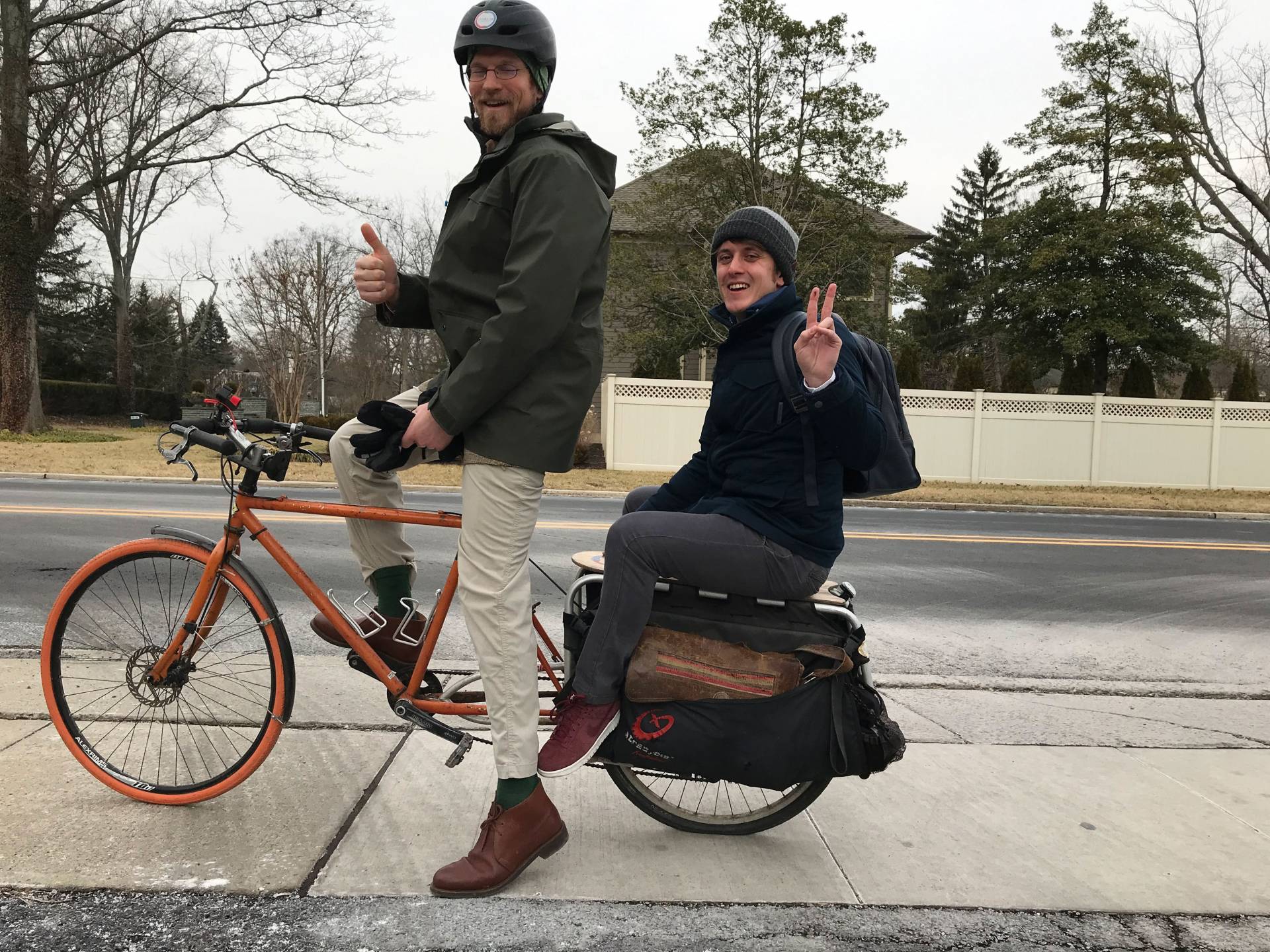
Forrest Meggers (left), assistant professor of architecture and the Andlinger Center for Energy and the Environment, gives visiting Ph.D. student Gianluca Serlale a ride to campus. Meggers is a longtime bike commuter. May will be Bike to Work Month at Princeton.
Easier than you think
Foster, senior associate director for administrative planning in the Office of the Executive Vice President, said she’s found walking easier than she imagined.
“I used to walk a few times a month, only if the weather was nice,” Foster said. “Now I walk every day and I really enjoy it. I appreciate my surroundings more. It alleviates stress — it is 15 minutes that I know I will have to myself when I can plan for the day, practice for a presentation or just simply enjoy the view. And it’s always great to add more steps to your day.”
Forrest Meggers, assistant professor of architecture and the Andlinger Center for Energy and the Environment, bikes to work. He also finds riding handy during the day.
“I can make it from the architecture building to the Engineering Quad in under 60 seconds,” Meggers said. “Commuting by bike is easier than you think! As an energy scientist, bikes are the most efficient form of travel (it even takes you more energy to ride a horse).”
Amanda Stevens, commute options manager, is available to help employees with what often is the hardest part: getting started. She can match you with others seeking to carpool or vanpool, review viable bike routes, or research public transit options.
In some cases, Transportation and Parking Services staff have worked with departments to modify employee schedules by a few minutes to accommodate their new commute.
Stevens said employees should also be reassured by the RYR back-up options, which include a guaranteed ride home for emergencies and a limited number of daily parking passes if there are times employees must drive their cars to campus.
“I would encourage staff simply to try it,” Stevens said. “I’m happy to develop a plan that you can try for a few weeks before committing long-term. Everyone is quick to assume ‘no, I can’t do this.’ But with a little help and a few adjustments to your routine, you could.”
